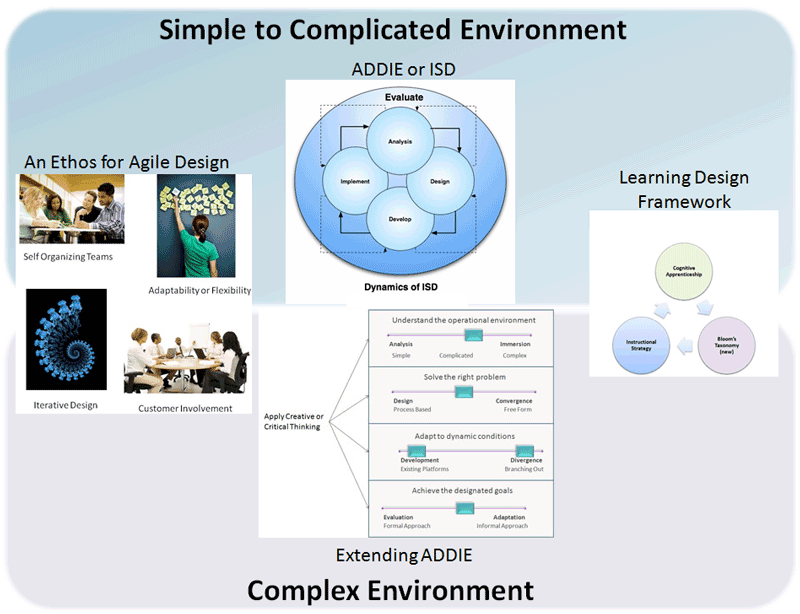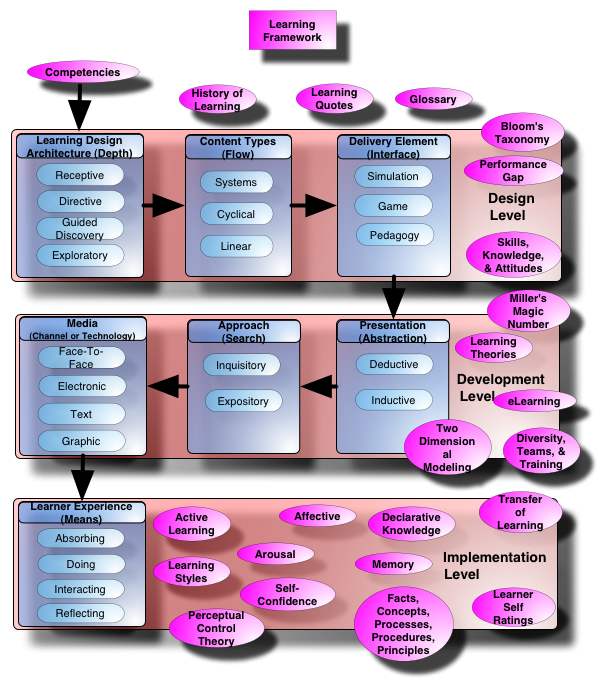Note: This site is moving to KnowledgeJump.com. Please reset your bookmark.
Merrill's Component Display Theory
M. David Merrill's Component Display Theory (CDT) (1983) describes the micro elements of instruction (single ideas and methods for teaching them). It is designed to work in conjunction with Reigeluth's theory.
CDT is comprised of three parts:
- A performance/content dimension comprised of the desired level of student performance and type of content.
- Four primary presentation forms
- A set of prescriptions relating the level of performance and type of content to the presentation forms.
Merrill further classifies learning into two dimensions:
- Content, which consists of facts, concepts, procedures, and principles. Content ranges from facts, which are the most basic forms of content, to principles. It is the actual information to be learned. The four types of content in component display theory are:
- Facts - logically associated pieces of information. Some examples are names, dates, and events.
- Concepts - symbols, events, and objects that share characteristics and are identified by the same name. Concepts make up a large portion of language and understanding them is integral to communication.
- Procedures - a set of ordered steps, sequenced to solve a problem or accomplish a goal.
- Principles - work through either cause-and-effect or relationships. They explain or predict why something happens in a particular way.
- Performance, made up of remembering, using, and generalities. Performance is classified with remembering as being the simplest form of performance, to finding (generalities) the most advanced. Performance is the manner in which the learner applies the content. The three types of performance are:
- Remembering - the learner is required to search and recall from memory a particular item of information,
- Using - the learner directly apply the information to a specific case and
- Finding - the learner uses the information to derive a new abstraction (concepts, principles, etc.).
By forming a matrix using the two dimensions of content and performance, the instructor determines which elements on the matrix are the goals for the learner:
Simplified Matrix
| Facts | Concepts | Procedure | Principles | |
| Remembering | ||||
| Using | ||||
| Finding |
The theory also identifies four primary presentation forms:
- Rules
- Examples
- Recall
- Practice
And some secondary presentation forms:
- Prerequisites
- Objectives
- Helps
- Mnemonics
- Feedback
The matrix is set up to determine the level of performance needed for an area of content. For each of the categories in the matrix, it can be assumed in CRT that there is a combination of primary and secondary presentation forms that will provide the most effective and efficient acquisition of skills and knowledge available. CRT specifies that instruction is more effective when it contains all the necessary primary and secondary forms. Thus, a complete lesson would consist of an objective, followed by some combination of rules, examples, recall, practice, feedback, helps, and mnemonics appropriate to the subject matter and learning task.
The theory is primarily designed for use by groups of learners. Several components are provided so that a wide variety of learners may participate, however each learner only needs the components which specifically work for her to achieve the goals of instruction.
References
Merrill, D. (1983). Component Display Theory. In C. M. Reigeluth (ed), Instructional Design Theories and Models: An Overview of their Current States. Hillsdale, NJ: Lawrence Erlbaum.
Merrill, D., (2002). First Principles of Instruction, ETR&D, Vol. 50, No. 3, 2002, pp. 43-59 ISSN 1042-1629. http://mdavidmerrill.com/Papers/firstprinciplesbymerrill.pdf




